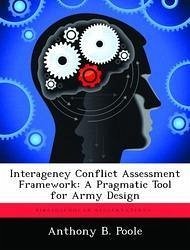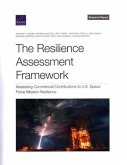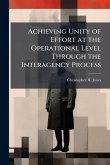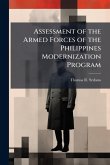A common perspective among U.S. interagency partners today is that any step towards more effective and coordinated responses to contemporary security challenges requires an improved and shared understanding of the nature of the conflict and the environment in which it exists or may potentially emerge. They also agree that this requires both a joint interagency process for conducting the assessment and a common conceptual framework to guide the collection and analysis of information. In October 2008, an interagency committee officially adopted the Interagency Conflict Assessment Framework (ICAF) as the conceptual tool which informs interagency planning for conflict prevention, mitigation and stabilization. Because the Army is increasing its practice of deploying more planners to support interagency planning while also involving more interagency partners in its planning, this demonstrates the need to examine ICAF methodology in order to determine its compatibility with and utility within Army doctrinal planning processes. In March 2010, design was officially introduced into Army doctrine as a new conceptual planning component complementing detailed planning. It is a meta-perspective approach that provides military leaders with advanced cognitive tools to address complex, ill-structured problems common to contemporary conflict operations. By way of extensive literature reviews and comparative analysis, this study will establish that the ICAF and Army design have considerable differences but also share many similar systems thinking perspectives. The comparative analysis reveals that the ICAF, while compatible with design, is incomplete. This monograph will recommend that the two methodologies are compatible and integrating the ICAF with Army design can be advantageous in establishing a useful interagency approach to learning and understanding the nature of conflict and the context in which it exists or might emerge. This work has been selected by scholars as being culturally important, and is part of the knowledge base of civilization as we know it. This work was reproduced from the original artifact, and remains as true to the original work as possible. Therefore, you will see the original copyright references, library stamps (as most of these works have been housed in our most important libraries around the world), and other notations in the work. This work is in the public domain in the United States of America, and possibly other nations. Within the United States, you may freely copy and distribute this work, as no entity (individual or corporate) has a copyright on the body of the work. As a reproduction of a historical artifact, this work may contain missing or blurred pages, poor pictures, errant marks, etc. Scholars believe, and we concur, that this work is important enough to be preserved, reproduced, and made generally available to the public. We appreciate your support of the preservation process, and thank you for being an important part of keeping this knowledge alive and relevant.
Bitte wählen Sie Ihr Anliegen aus.
Rechnungen
Retourenschein anfordern
Bestellstatus
Storno








